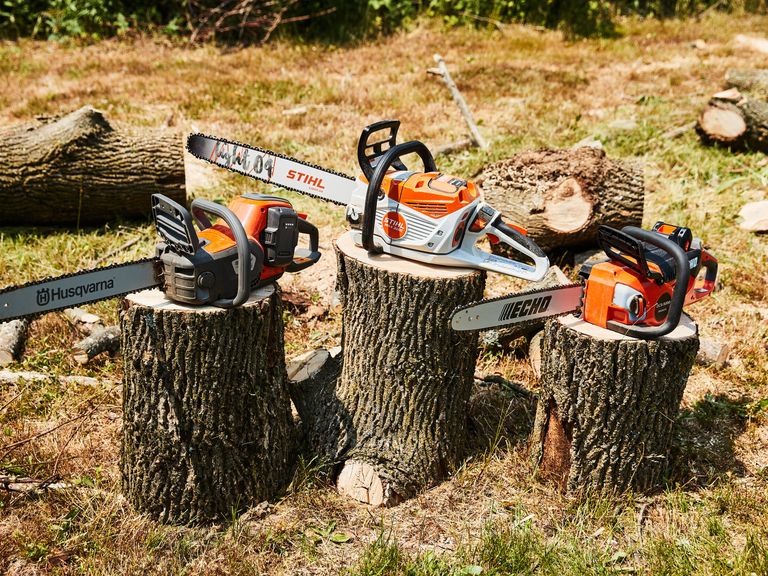Electric chain saws are versatile and powerful tools for cutting and trimming wood. However, their use requires careful attention to safety and technique. Whether you’re a seasoned pro or a novice, understanding the proper steps for using an electric chain saw is essential to ensure both your safety and the effectiveness of your work.
In this comprehensive guide, we’ll walk you through each step of using an electric chain saw, emphasizing safety precautions, choosing the right equipment, preparing your work area, and mastering cutting techniques.
What Are The Processes Using An Electric Chain Saw?
By following these guidelines for clearing the work area, starting the chainsaw, and applying proper cutting techniques, you’ll not only enhance your safety but also improve the efficiency and effectiveness of your cutting tasks.
Safety Precautions
Wearing Appropriate Safety Gear
- Hard Hat: A hard hat provides protection for your head from falling debris, especially when cutting overhead branches. Make sure it fits securely and is properly adjusted.
- Safety Glasses: Safety glasses or goggles shield your eyes from wood chips, dust, and other particles that can be ejected during cutting.
- Ear Protection: Chainsaws are loud, and long exposure can damage your hearing. Use ear protection such as earmuffs or earplugs to reduce noise levels.
- Gloves: Proper gloves not only offer a better grip on the chainsaw but also protect your hands from sharp edges, splinters, and vibrations.
Physical and Mental Condition:
Operating a chainsaw requires physical strength and stamina. Ensure you are well-rested and in good physical shape to handle the equipment effectively.
Mental alertness is essential. Avoid using a chainsaw when you’re fatigued, under the influence of drugs or alcohol, or if you’re feeling distracted.
Environmental Hazards
Be cautious on slopes, uneven ground, or when working near ditches and holes. Make sure your footing is secure.
Look for dead or unstable branches that might fall while you’re working. These can be a significant danger, so take appropriate measures to remove or secure them.
Choose the Right Chainsaw

The size and power of your electric chainsaw should match the task at hand. Consider the following factors:
- The diameter and type of wood you intend to cut.
- The frequency of use – occasional or heavy-duty.
- Your own physical strength and experience.
Preparation
- Before each use, thoroughly inspect your chainsaw:
- Check for loose or damaged parts, including nuts, bolts, and handles.
- Examine the bar and chain for signs of wear, damage, or irregularities.
- Look for any leaks, such as oil or fuel, which could indicate a problem with the chainsaw’s internal components.
- Fix any issues before using the chainsaw. Operating a damaged or malfunctioning chainsaw can be extremely dangerous.
Sharpness and Chain Tension:
A sharp chain is not only more efficient but also safer. Dull chains can lead to kickback, which is a rapid upward and backward motion of the chainsaw that can be difficult to control.
Ensure the chain is properly tensioned. A loose chain can derail or come off during operation. A too-tight chain can damage the chainsaw or cause it to bind during cutting.
Chain Brake
The chain brake is a critical safety feature. It stops the chain’s rotation when engaged. Make it a habit to activate the chain brake when not actively cutting or when moving to a new cutting location. This minimizes the risk of accidents if the chainsaw were to unintentionally engage.
Clearing the Work Area
Before you start cutting, clear the area around the cutting site of all debris, branches, and obstructions.
Furthermore, this step is essential for your safety and the efficiency of your work. Removing obstacles ensures that you won’t trip or get tangled in the debris while operating the chainsaw.
Keep Bystanders and Pets at a Safe Distance
Maintain a safe working perimeter around you. Keep bystanders, children, and pets at a distance of at least 30 feet (10 meters) or more. Encourage others to stay clear of the work area until you’ve finished cutting and disengaging the chain.
Starting the Chainsaw
Power Source: Electric chainsaws can be corded or cordless. If your chainsaw is corded, ensure that you have a suitable outdoor extension cord with the correct gauge and length to reach your work area without excessive slack. If it’s cordless, make sure the battery is fully charged.
Manufacturer’s Instructions: Every electric chainsaw model may have its own unique starting procedure. It’s crucial to read and follow the manufacturer’s instructions provided in the user manual. Typically, you’ll need to:
- Press a safety button or engage a safety mechanism (if present).
- Pull the trigger to start the motor.
- Follow these steps carefully to ensure a safe and proper startup.
Final Words
In conclusion, mastering the use of an electric chain saw requires a combination of proper safety precautions, equipment maintenance, and skillful techniques. By following the steps outlined in this guide, you’ll not only ensure your safety but also achieve more effective and efficient cutting results with your electric chain saw. Stay safe, stay informed, and enjoy the power and precision of this versatile tool.
